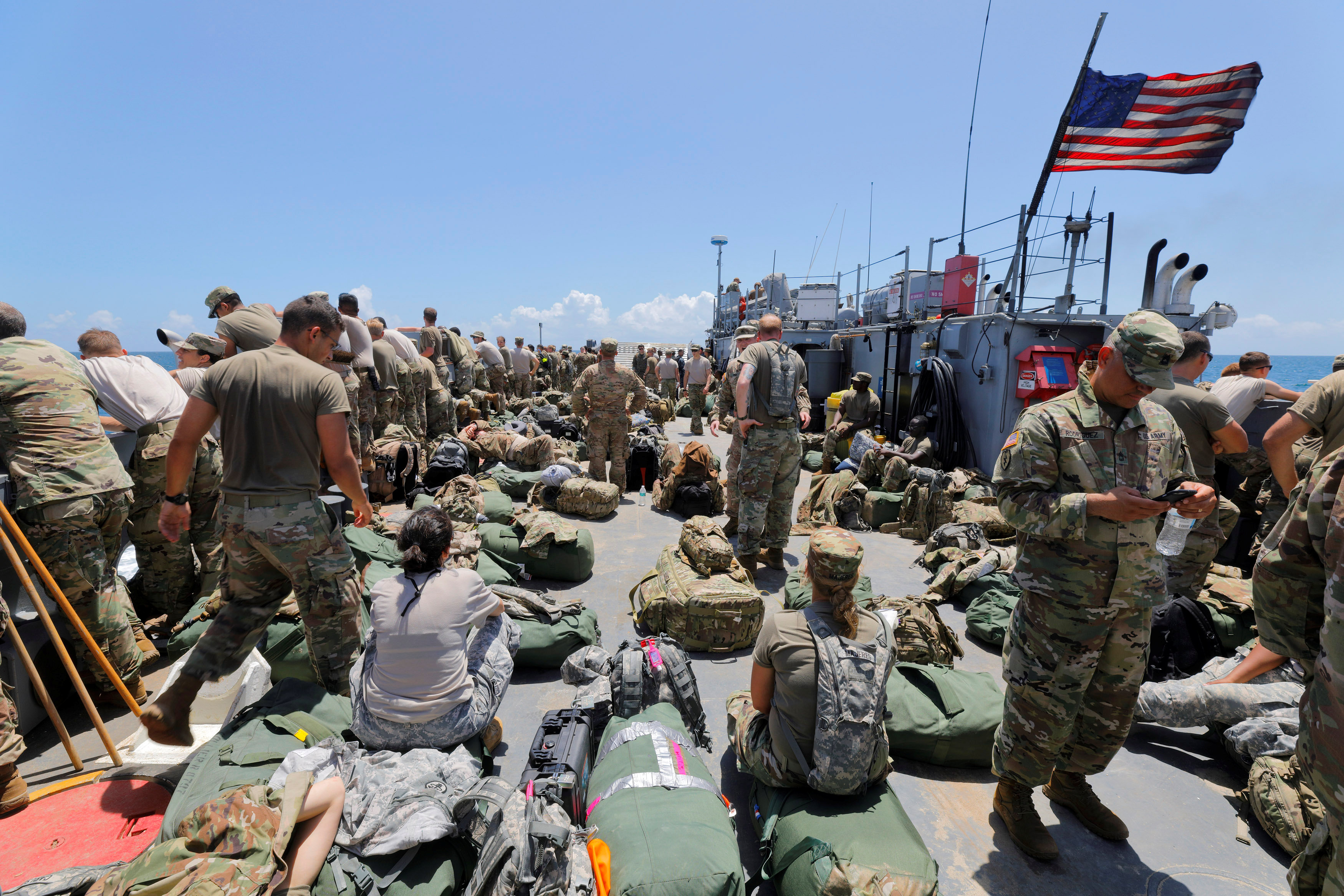By Robert Sandiford
BRIDGETOWN, Barbados (Reuters) – Hurricane Maria picked up strength and roared toward the Leeward Islands on Monday on a track that could whip several eastern Caribbean islands with their second major storm this month.
Maria grew into a Category 3 storm on the five-step Saffir-Simpson scale, with maximum sustained winds of 120 miles per hour (195 km per hour). It was located about 60 miles (95 km) east of Martinique, the U.S. National Hurricane Center said at 11 a.m. ET (1500 GMT).
It was headed west-northwest at about 10 mph (17 kph) on a track that would put it over the U.S. territory of Puerto Rico by Wednesday.
Maria was expected to be the second major hurricane this year to hit the Leeward Islands, which were hammered by Hurricane Irma earlier this month, the center said.
Streets were flooded in some residential parts of the island of Barbados, which had been experiencing heavy rain since Sunday as the storm approached.
Maria was expected to bring storm surges – seawater driven ashore by wind – of up to 6 feet to 9 feet (1.8-2.7 m), the NHC said. Parts of the central and southern Leeward Islands could see as much as 20 inches (51 cm) of rain, it said.
Hurricane and tropical storm warnings and watches were in effect for a string of islands in the area, including the U.S. and British Virgin Islands, Antigua and Barbuda and the French-Dutch island of Saint Martin.
Several of those islands were devastated earlier this month when Hurricane Irma rampaged through the Caribbean as one of the most powerful Atlantic hurricanes ever recorded, killing more than 80 people on the islands and the U.S. mainland.

The deck of a U.S. Navy landing craft is crowded with Army soldiers and their belongings as they are evacuated in advance of Hurricane Maria, off St. Thomas shore, U.S. Virgin Islands September 17, 2017. REUTERS/Jonathan Drake
Puerto Rico, a U.S. territory which Irma grazed as it headed toward Cuba and Florida, opened shelters and began to dismantle construction cranes that could be vulnerable to high winds as it prepared for Maria.
“It is time to seek refuge with a family member, friend, or move to a state shelter because rescuers will not go out and risk their lives once winds reach 50 miles per hour,” Puerto Rico Governor Ricardo Rosselló told reporters on Monday.
Some 450 shelters were open, including one in San Juan that is already housing people evacuated by nearby islands hit by Irma, the government said.
More than 1,700 residents of Barbuda were evacuated to neighboring Antigua after Irma damaged nearly every building there.
Further north, forecasters were also tracking Category 1 Hurricane Jose, which was carrying 75-mph (120-kph) winds and was located about 265 miles (430 km) east-southeast of Cape Hatteras, North Carolina.
The eye of that storm was forecast to remain off the east coast of the United States for the next few days, bringing dangerous surf and rip currents to beaches from Delaware through Massachusetts.
(Additional reporting by Tracy Rucinski in Chicago; Writing by Scott Malone; Editing by Frances Kerry)
 Hurricane Maria is shown in the Atlantic Ocean about 85 miles east of Martinique in this September 17, 2017 NASA handout satellite photo. NASA/Handout via REUTERS
Hurricane Maria is shown in the Atlantic Ocean about 85 miles east of Martinique in this September 17, 2017 NASA handout satellite photo. NASA/Handout via REUTERS
